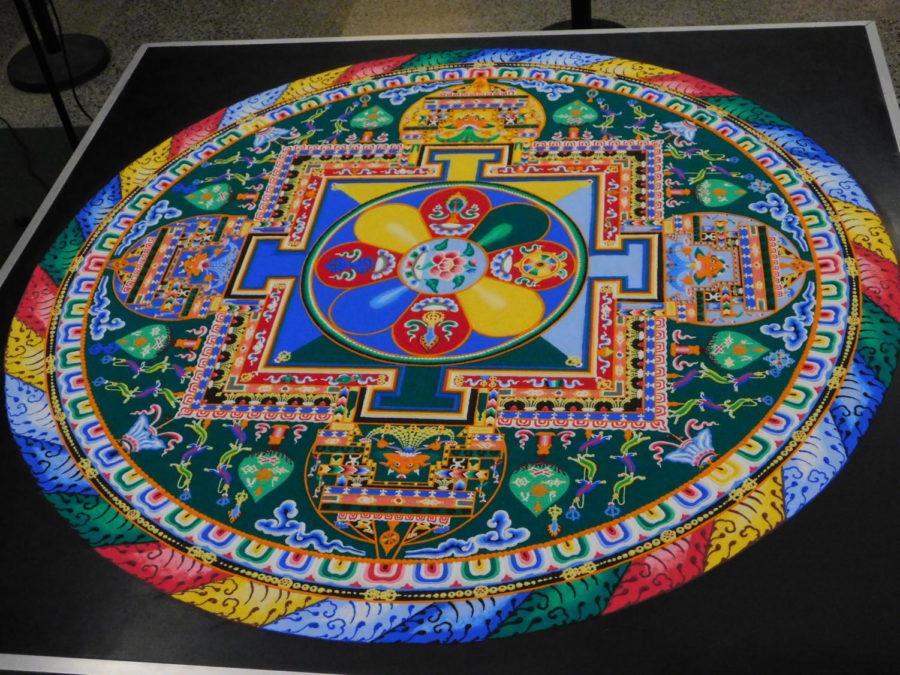Iowa State student design community mandala following Tibetan monks visit
William Sibilski/Iowa State Daily
The finished Mandala Sand painting by the Tibetan Monks before they start their closing ceremony in the Main Lounge of the Memorial Union on Sept. 28. The outer layer is the map of the mandala, the inner layer is the human mind while the center layer is the energies of the human body.
October 3, 2018
By chance rather than choice, Kyrstin Myhers stumbled upon an intriguing assignment this year within the Memorial Union Graphic Design department.
Myhers, senior majoring in interdisciplinary design, was given the project of designing the community mandala for The Mystical Arts of Tibet visit last week in the Memorial Union main lounge.
The Student Union Board (SUB) has previously asked Myhers to take on other assignments, including comedy-night posters related to each comedians’ unique personality as well as concert posters created from a strict template.
“The monks reached out to Iowa State and said that they wanted a community mandala so that everyone could try the method of putting the sand on,” Myhers said. “[Everyone] could get a feel for how tedious it is, but a simplified version.”
SUB specified they wanted something “Iowa State related” in the design as well as a variety of colors. This allowed Myhers to merge Iowa State with the Tibetan monk culture.
Myhers said that to complete the design, the process only took about an hour.
“It was also cool because you’re merging two different things to make something that interests and represents both sides,” Myhers said.
Myhers explained how her typical jobs are specifically for Iowa State. But this project broadened her experience, as this was Myhers’ first-ever piece of interactive artwork.
“I took a look at the Tibetan monks’ mandalas, the ones they typically fill in, and took some elements from that one,” Myhers said. “The intricacy of this one was a lot more simplified just so everyone could partake. ”
In relation to the Monks mandala, Myhers noted the “tiny little grains of sand lines” and their difficulty to replicate. In contrast, her design was a bit friendlier to the general public, allowing everyone to take part.
“I tried it out and it was fun … It made you appreciate what they were doing…just using [chakpur] and how difficult it is to get it just right,” Myhers said.
Myhers stated that she would participate in a similar project again if she got the chance.
“It was really fun. I hadn’t done anything interactive before so it was something that I didn’t realize I have an interest in,” Myhers said.
“Seeing other people interact with what you’ve created is really cool to see, too.”
Myhers most enjoyed seeing the end result.
“I didn’t realize how it took the monks to do the artwork. And then, with the one that I designed, it was so simplistic but that also took almost just as long … which was interesting for me to see,” Myhers said.
However, Myhers said that as a designer, there were still some inner battles she dealt with during the process.
“Just trying to get it right and make sure it was something that everyone could enjoy. Sometimes that’s hard to disconnect as a designer, having a design that you want but making sure that everyone else will be pleased. Sometimes you [have to] sacrifice what you want.”
Myhers took on a broader viewpoint as she relayed an important takeaway about the experience.
She said something she learned was “that monks are kind of a dying culture and I think … them coming to our school is really important in spreading that awareness. They’re just trying to spread awareness for their culture and show their traditions.”







